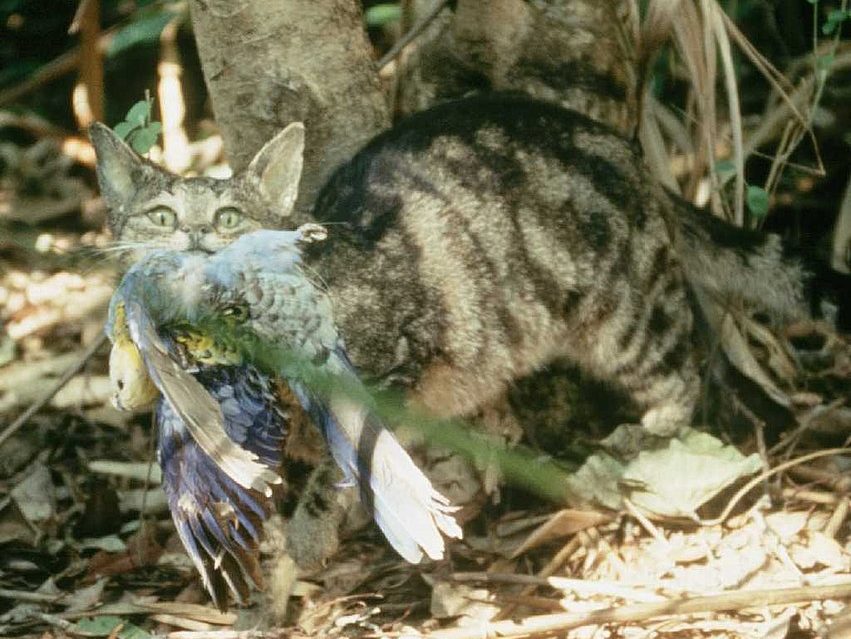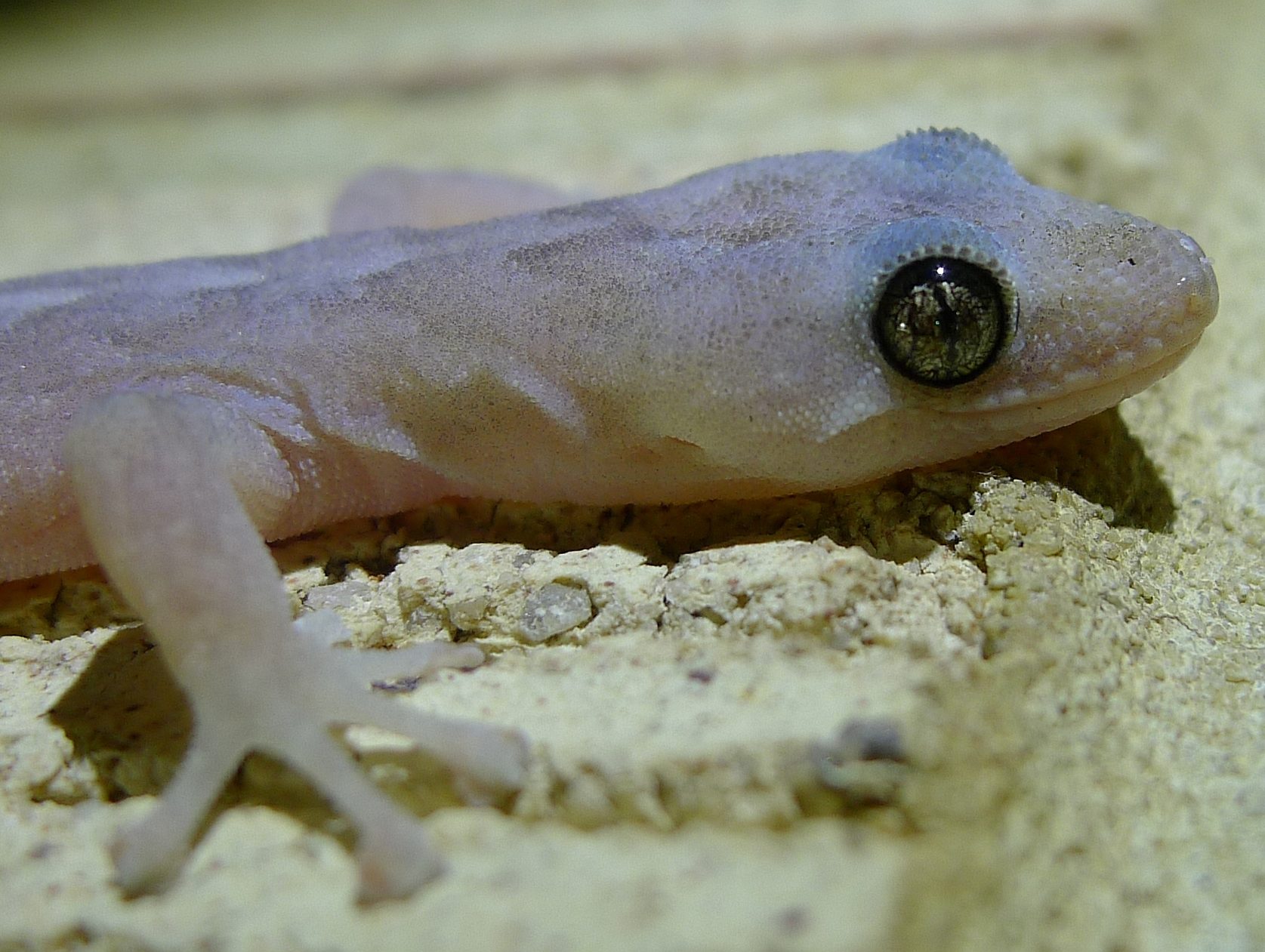There are a lot of cats in Australia – researchers have calculated that the total number of feral cats in largely natural landscapes averages 2.07 million (varying between 1.4 million in drought and average years to 5.6 million after prolonged and extensive wet periods in inland Australia). Then there are the strays (an estimated 0.72 million), on the fringes of human society in highly modified landscapes.
Note: We are re-sharing our articles. This article was originally published on August 9, 2018.

Add to that, the number of pet cats, estimated from national surveys of pet ownership and you get another 3.88 million cats, so roughly 6 to 10 million cats depending on whether its rained recently in the inland drier regions where most of the ferals live.
Those millions are estimated to kill 377 million birds across Australia each year and are a serious threat to the nation’s small native mammals. But until now, little has been known about the number of reptiles killed by cats.
Research just published in the journal Wildlife Research, reveals that nationally, the total number of reptiles killed by all cats in Australia is likely to be substantially higher than the number of birds killed – 649 million versus 377 million.
“To estimate the number of reptiles killed annually in Australia by cats and to list Australian reptile species known to be killed by cats, we used data from >80 Australian studies of cat diet (collectively >10 000 samples), and estimates of the feral cat population size, to model and map the number of reptiles killed by feral cats.”
The number of reptiles killed was found to be highest in the arid regions.
“Feral cats in Australia’s natural environments kill 466 million reptiles per year. (Range 271–1006 million). The tally varies substantially among years, depending on changes in the cat population driven by rainfall in inland Australia.
Reptiles were found to occur more often in the diet of cats than of Australia’s other main introduced predator, the European red fox. While the study focused on feral cats, estimates were also made of the reptile take of stray cats (ferals living in highly modified landscapes).

“Based on a smaller sample size, we estimate 130 million reptiles per year are killed by feral cats in highly modified landscapes, and 53 million reptiles per year by pet cats, summing to 649 million reptiles per year killed by all cats. Predation by cats is reported for 258 Australian reptile species (about one-quarter of described species), including 11 threatened species.”
The actual number of species preyed on by cats is likely to be higher in reality as many studies didn’t identify the reptiles in gut contents to species level. What’s more, Australian reptile species, like our own geckos and skinks, have yet to be completely catalogued. There are also few population monitoring studies of reptiles, so that it is difficult to know the extent of the impact of introduced predators on reptile population numbers
Even the estimate of the huge number eaten may be an underestimate, as the authors explain.
“Collectively, the collated cat dietary studies include 10744 samples of scats or stomachs. Most studies reported only frequency of occurrence (i.e. the proportion of stomachs or scats that contained reptiles) rather than a record of the number of individual reptiles in those samples.”
Other factors also contribute to a likely under-estimation.
“We assume that that one stomach or scat sample represents 24h worth of prey eaten by an individual cat. This is likely to be a conservative under-estimate of the number of prey killed per day because:
(1) prey are largely digested after 12h;
(2) cats typically produce more than one scat per day;
(3) cats may kill some reptiles but not necessarily consume them (‘surplus kill’);
(4) cats may injure hunted animals but not directly kill and consume them, and many of those injured animals will subsequently die;
(5) reptile eggs and hatchlings may be rapidly digested and leave little trace.
Conversely, cats may also scavenge, so some reptiles included in cat dietary studies are not necessarily killed by the cat that consumed them.”
The researchers conclude that cat predation exerts a considerable ongoing toll on Australian reptiles and they also provided some interesting insights into the characteristics of reptiles likely to be most impacted.
“Reptile groups likely to be most affected by cat predation are those that:
(1) are relatively long-lived and have low rates of reproduction (because these may be most affected by any factor causing increase in mortality rates);
(2) have high predictability in activity, such as those with permanent burrows or latrine sites (because the ambush strategy typically employed by cats will be most effective with such prey types);
(3) occur in habitats with relatively open ground vegetation and/or in sites subject to frequent and extensive fire (because cats may occur more commonly in such areas and hunt most effectively in them);
(4) are colonial or semi-colonial (because cats may develop effective search images for such species and target them selectively);
(5) are predominantly terrestrial, rather than arboreal or fossorial (although cats can hunt in trees and can dig up prey);
(7) occur mainly in arid or semi-arid areas.”
An earlier study also found that a reptile’s size was a factor in whether it was likely to be preyed on. (Australia does, after all, include crocodiles in its reptilian fauna!).
“Cats preyed selectively on reptile species in the size range 10–50g, and less so in the size ranges 50–100g and 100–3500g and selected against reptile species<10g. However, such a size preference is challenging to relate to impacts on individual species because many reptile species exhibit marked size changes over their lifetime.”
More studies are needed on the impact feral, stray and pet cats are having on New Zealand’s gecko and skink populations, but our own reptile species are right within the Australian cats’ preferred size range.
The full research paper is published in Wildlife Research. Only the abstract is freely available online to non-subscribers.

